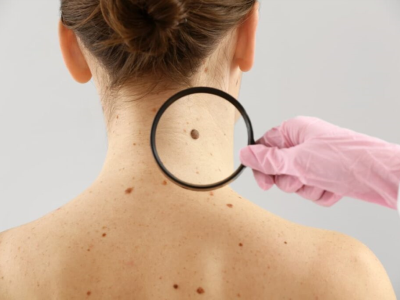How can I tell if I have skin cancer?
Skin cancers actually encompass a very broad topic. However, I would like to discuss the clues of commonly seen skin cancers and briefly explain when to consult a dermatologist.
Every cancer has a precursor lesion known as a precancerous lesion. Since skin cancers are visible on the surface, our job is made easier. Diagnosing and treating cancer in its precursor lesion stage is, of course, very valuable.
To start with moles, any moles that change shape, show lightening or darkening in color, or bleed should definitely be examined by a dermatologist. In fact, I recommend all my patients have a mole examination once a year.
Individuals who have had frequent sunburns in their youth or have had to work outdoors for many years have an increased risk of skin cancer, particularly in sun-exposed areas. For these individuals, I recommend consulting a dermatologist if new bumps, crusty moles, or bleeding formations develop in areas where the sun directly hits, such as the face, neck, ears, and the back of the hands.
Sometimes, skin changes can also occur due to the spread of tumors from internal organs or hematological malignancies (blood cancer). In such cases, new bumps, redness, or hardness may be observed on the skin. Your dermatologist will diagnose this condition as well.
In my clinic and many dermatology clinics, my colleagues and I make diagnoses using dermoscopic examination and, if necessary, take skin biopsies. Dermoscopy is a lighted device that magnifies the skin lesion 10 times. It is a device we frequently use in the examination of skin diseases. If we suspect a malignant or carcinogenic lesion, we perform a skin biopsy, and the definitive result is determined by the pathology department. Depending on the result, the process may continue with either monitoring or surgical repair.





